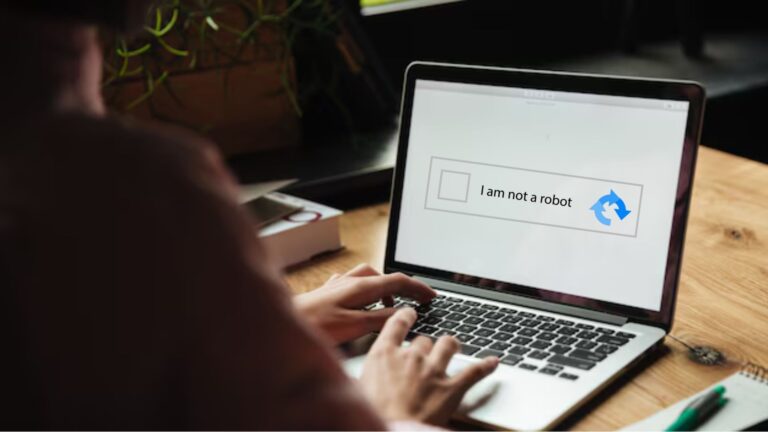CAPTCHA, which stands for “Completely Automated Public Turing test to tell Computers and Humans Apart,” is a tool that many websites use to distinguish between real human users and automated bots. Although some people may find CAPTCHA frustrating or annoying, it plays a critical role in keeping websites safe and secure. In this article, we will explore why websites continue to use CAPTCHA, how it works, the different types available, and the challenges it helps to address.
What is CAPTCHA
CAPTCHA is a type of challenge-response test used on websites to determine whether a user is a human or a bot. Bots, or automated programs, can perform repetitive tasks at a much faster rate than humans. While bots can be useful in some scenarios, they are often used for malicious purposes such as spamming, data scraping, or attempting to hack into accounts.
To prevent these activities, CAPTCHA presents a challenge that a bot would find difficult or impossible to complete, but that a human can easily solve. These challenges can include reading and typing out distorted text, identifying objects in images, or solving simple puzzles. The goal is to block bots from accessing certain parts of the website while allowing humans to proceed without difficulty.
The Importance of CAPTCHA in Website Security
Websites face various threats from malicious bots. These threats can disrupt the normal functioning of a site, lead to data breaches, and cause significant damage to both the site owner and its users. CAPTCHA is a crucial security measure that helps to mitigate these risks by ensuring that only real users can access sensitive areas of a website.
Here are some specific reasons why CAPTCHA is important for website security:
Preventing Automated Account Creation:
Bots can quickly create thousands of fake accounts on websites that offer services, such as social media platforms, online forums, or email providers. These fake accounts can be used for spamming, phishing, or launching attacks. CAPTCHA ensures that account creation is limited to real humans, reducing the risk of these malicious activities.
Protecting Online Forms:
Many websites use forms for various purposes, such as contact forms, survey submissions, or registration pages. Bots can flood these forms with fake submissions, overwhelming the system and making it difficult for legitimate users to submit their information. By using CAPTCHA, websites can filter out bot-generated submissions and maintain the integrity of their forms.
Safeguarding Login Pages:
One common tactic used by hackers is a “brute force” attack, where they use bots to try different password combinations until they gain access to an account. CAPTCHA helps prevent brute force attacks by introducing an additional layer of security, making it harder for bots to attempt multiple logins in a short period.
Protecting Online Polls and Surveys:
Online polls and surveys are often targeted by bots to manipulate results. This can lead to inaccurate data, which can be particularly harmful if the results are used for decision-making. CAPTCHA ensures that each vote or submission comes from a genuine user, maintaining the accuracy of the results.
Preventing Ticket Scalping:
In the entertainment industry, bots are often used to purchase large numbers of tickets for popular events, which are then resold at inflated prices. CAPTCHA can help prevent this by making it difficult for bots to quickly buy up all the available tickets, ensuring that more tickets are available to real fans.
How CAPTCHA Works: The Technology Behind It
CAPTCHA technology is designed to create challenges that are easy for humans but difficult for bots. The most common types of CAPTCHA include:
Text-Based CAPTCHA:
This is the traditional form of CAPTCHA, where users are asked to type out a sequence of distorted letters and numbers. The distortion makes it difficult for bots to read the text using optical character recognition (OCR) software, but humans can still recognize the characters and type them in correctly.
Image-Based CAPTCHA:
In this type of CAPTCHA, users are presented with a set of images and asked to select the ones that match a specific description, such as “Select all images with traffic lights.” This type of challenge relies on the human ability to recognize objects in images, a task that is still challenging for most bots.
Audio CAPTCHA:
For users who have difficulty with visual challenges, some websites offer audio CAPTCHA, where the user listens to a series of numbers or letters and types them out. The audio is often distorted with background noise, making it hard for bots to decipher but still understandable for humans.
reCAPTCHA:
Developed by Google, reCAPTCHA is a more advanced version of CAPTCHA that often requires users to simply check a box that says, “I’m not a robot.” Behind the scenes, reCAPTCHA analyzes the user’s behavior on the page to determine whether they are a human or a bot. If the system is uncertain, it may present additional challenges, such as identifying objects in images.
Invisible CAPTCHA:
This is a more user-friendly version of CAPTCHA where the challenges are hidden from users. The system analyzes the user’s behavior and interactions with the website to determine if they are a bot. If anything suspicious is detected, the user may be presented with a challenge. Otherwise, they can proceed without any interruptions.
Why CAPTCHA Is Still Relevant Today
Despite advancements in technology, CAPTCHA remains relevant because the threats posed by bots continue to evolve. Cybercriminals are constantly developing new methods to bypass security measures, making it essential for websites to use CAPTCHA as part of their defense strategy. Here are some key reasons why CAPTCHA is still widely used:
Evolving Bot Technology:
Bots are becoming more sophisticated, with some able to mimic human behavior to a certain extent. CAPTCHA provides a way to stay ahead of these developments by introducing challenges that are difficult for bots to overcome. As bots evolve, so does CAPTCHA technology, ensuring that it remains an effective security measure.
Protecting User Data:
With data breaches becoming increasingly common, protecting user information is a top priority for website owners. CAPTCHA helps to prevent unauthorized access to accounts and sensitive data by blocking bots from exploiting vulnerabilities on a website.
Compliance with Regulations:
In some industries, using CAPTCHA is necessary to comply with data protection regulations. For example, websites that handle financial transactions or personal information may be required to implement CAPTCHA to ensure that only authorized users can access these services.
Maintaining Website Performance:
Bots can significantly slow down a website’s performance by making numerous requests in a short period. CAPTCHA helps to filter out these automated requests, ensuring that the website remains fast and responsive for real users.
Improving User Experience:
While CAPTCHA can sometimes be an inconvenience, it ultimately contributes to a better user experience by keeping the website free of spam, fraud, and other malicious activities. By preventing bots from disrupting the normal functioning of a site, CAPTCHA helps to create a safer and more enjoyable online environment for everyone.
The Future of CAPTCHA
As technology continues to advance, the future of CAPTCHA will likely involve more sophisticated methods for distinguishing between humans and bots. Some of the trends that may shape the future of CAPTCHA include:
Increased Use of Behavioral Analysis:
Future CAPTCHA systems may rely more on analyzing user behavior, such as mouse movements, typing patterns, and how users interact with a website. This approach could make CAPTCHA even less intrusive for real users while still providing robust protection against bots.
Integration with AI and Machine Learning:
AI and machine learning technologies could be used to create more dynamic CAPTCHA challenges that adapt to the specific threats faced by a website. For example, a CAPTCHA system could learn from previous bot attacks and develop new challenges to counteract them.
Greater Accessibility:
As awareness of accessibility issues grows, future CAPTCHA systems will likely become more inclusive, offering alternative challenges for users with disabilities. This could involve the use of voice recognition, facial recognition, or other technologies that make CAPTCHA easier to complete for all users.
Collaboration Between Websites and Security Providers:
In the future, we may see more collaboration between websites and security providers to develop CAPTCHA systems that are tailored to specific industries or types of threats. This could lead to more specialized CAPTCHA solutions that offer higher levels of protection.
Conclusion
CAPTCHA remains a vital tool in the fight against online threats. By preventing bots from accessing sensitive areas of a website, CAPTCHA helps to protect user data, maintain the integrity of online services, and ensure a positive user experience. While CAPTCHA may evolve in the future, its core purpose will remain the same: to keep websites safe and secure by distinguishing between humans and bots.
Websites continue to rely on CAPTCHA because it provides an effective and reliable way to combat the ever-present threat of malicious bots. Whether through text, images, audio, or behavioral analysis, CAPTCHA challenges play a crucial role in safeguarding the online world. As we move forward, CAPTCHA will likely continue to adapt and improve, ensuring that it remains a key component of website security for years to come.



